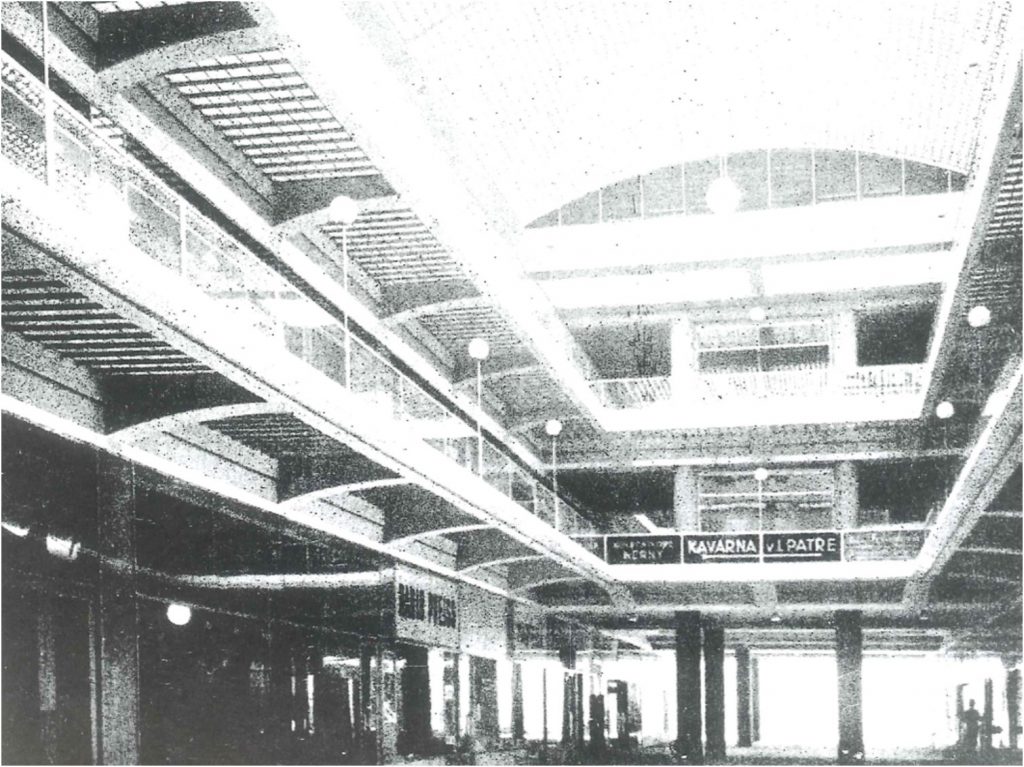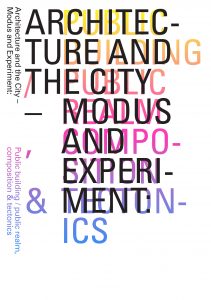The Impact of the Pandemic to Street Life, Urban Culture and Beyond.
Maurice Harteveld, co-host and moderator of the roundtable discussion with speakers from the Netherlands, from Greece, from France, and from the United States.
Tag Archives: interior public space
Designs for Boston and Amsterdam
Propositions under Continuously Changing Urban Conditions

Massive urbanisation puts pressure on public space and demands new programmes along with alternative gathering places such as public interior spaces and a variety of forms of collective spaces. Moreover, in the rapidly changing city, infrastructure and mobility remain of vital importance. A co-evolving diversity of programme cannot be planned, but interventions in the city need constantly to be grounded on sharp design approaches to respond adequately to the necessities of the time: While being environmentally sustainable, given the available resources.
In general, infrastructure, mobility, and public life manifest themselves in various forms as carriers of such urban development. Design experiments, as put forward in our new book, show how to work with continuously changing urban conditions, with mobility transforming cities whilst with public spaces taking various forms, with programmes which hybridise, and with new technologies to keep up with the urban dynamics. Given these themes, designs should carry awareness of the inclusiveness and accessibility of various systems and places, facilities, and technologies. Spatially this means questioning how to keep the city open and connected, attractive, and liveable?
Continue reading
Democratic, Inclusive, Agential Cities

This article highlights the dynamics of values in our reasoning on public space. By means of an epistemological study, illustrated by examples in the Dutch city of Amsterdam, it tests the contemporary premises underlying our ways to safeguard the inclusive, democratic, agential city, and, as such, it aims to update our view on public space. The article raises three subsequent main questions: [i] Is the city our common house as perceived from the Renaissance onward, containing all, and consequently are public spaces used by the people as a whole? [ii] Is the city formalising our municipal autonomy as emphasised since the Enlightenment, in an anti-egoistic manner, and in this line, are public spaces owned by local governments representing the people? And, [iii] is the city open to our general view as advocated in Modern reasoning, restricting entrepreneurial influences, and synchronically, is its public spaces seen and/or known by everyone? – Inclusiveness, democracy, and agentiality are strongholds in our scientific thinking on public space and each issue echoes through in an aim to keep cities connected and accessible, fair and vital, and open and social. Yet, conflicts appear between generally-accepted definitions and what we see in the city. Primarily based upon confronting philosophy with the Amsterdam case for this matter, the answering of questions generates remarks on this aim. Contemporary Western illuminations on pro-active citizens, participatory societies, and effects of among others global travel, migration, social media and micro-blogging forecast a more differentiated image of public space and surmise to enforce diversification in our value framework in urban theory and praxis.
Read full article online:
Harteveld, Maurice (2019) ‘Reviewing Premises on Public Spaces in Democratic, Inclusive, Agential Cities, illustrated by Amsterdam’, In: The Journal of Public Space, 2019, Volume 4, Number 2, pp. 123-143
The Journal of Public Space is open access, contents are freely accessible under Creative Commons Attribution-NonCommercial 4.0 International License (CC BY NC).
For the full issue: Vol. 4 n. 2 | 2019 | FULL ISSUE
Editors: Maurice Harteveld and Hendrik Tieben
Managing Editor: Luisa Bravo
Publisher: City Space Architecture / UN-Habitat
Pasáži Renesance
Prague has more arcades than Paris. Still, they are less known. This is unfortunate, because these arcades underlining the identity of Prague and the Czech Republic. This is underpinned particularly during the 1990s arcade renaissance. New arcades have been designed, like Pasáž Jiřího Grossmanna (1995 –1996), Rathova Pasáž (1996), and the redesign Hrzanska Pasáž of 1702-1704 (1996). These projects have upgraded existing arcade systems, introduced new styles, but foremost new hopes… It echoed an update on the Czech Awareness.
Throughout history we have seen this happen in the design of arcades in Prague. This particular study brings us back to the rise of Bohemian identity and unfolds an epistle illuminating an alternative arcade project. As such, the study reframes relations between design of public space and society and provides a way to understand shifts in these.

Pasáže Černé Růže (1936), by Oldřicha Tyla
Pražské Pasáže
Arcade Projects in Prague
Public Buildings | Urban Architectural Design | Contextual Assignment
as projects for people, and projects within Society
Architecture and the City
The Architecture and the City: Public Realm/Public Building research group of the Faculty of Architecture and the Built Environment, Delft University of Technology focuses on questions regarding the mutual relationship between the city and its public realm. This is a relationship that can only be considered in socio-cultural and economic context. The idea of the public realm here refers to an intermediate ‘space’, which facilitates and mediates between different groups of inhabitants and individuals; the idea of the public realm as the space of (ex)change of ideas, opinions and beliefs of the different groups of users. Therefore, the architecture of the city and its actual qualities form the main framework of this research. Within this context urban blocks, as interface between architecture and urban design, and public buildings are seen as crucial architectural elements. Their functioning and organisation are physically, symbolically, socially and economically fundamental to the city. As such they form a domain both of architectural convention and experimentation. In terms of research and design methods architectural typology, typo-morphology and research-by-design hold a central position in our group’s approach.
Public Space: Changing Values
The Quest for Public Space: Changing Values in Urban Design, The City as Learning Lab and Living Lab
This article highlights the dynamics of values in our reasoning on public space. By means of an epistemological study, it tests the contemporary premises underlying our ways to safeguard the inclusive, democratic, agential city, and, as such, it aims to update our view on urban design. The article raises three subsequent questions: [i] Is the city our common house as perceived from the Renaissance onward, containing all, and consequently are public spaces used by the people as a whole? [ii] Is the city formalising our municipal autonomy as emphasised since the Enlightenment, in an anti-egoistic manner, and in this line, are public spaces owned by local governments representing the people? And, [iii] is the city open to our general view as advocated in Modern reasoning, restricting entrepreneurial influences, and synchronically, is its public spaces seen and/or known by everyone? – Inclusiveness, democracy, agentiality are strongholds in our scientific thinking on public space and each issue echoes through in the practice on urban design. Yet, in an aim to keep cities connected and accessible, fair and vital, and open and social, conflicts appear. Primarily based upon reviewing urban theory and particularly experiencing the Amsterdam for this matter, the answering of questions generates remarks on this aim. Contemporary Western illuminations on pro-active citizens, participatory societies, and effects of social media and micro-blogging forecast a more differentiated image of public space and surmise to enforce diversification in our value framework in urban design.
See:
Harteveld, Maurice G. A. D. (2017) The Quest for Public Space: Changing Values in Urban Design, The City as Learning Lab and Living Lab, IN Tieben, Hendrik, Yan Geng, and Francesco Rossini (eds) The Entrepreneurial City, , Rotterdam: International Forum on Urbanism (IFoU) / Hong Kong: School of Architecture, The Chinese University of Hong Kong, pp. 395-411
or alternative link
Imminent Commons
|
Delft University of Technology at City as Architecture – Architecture as City 2nd September — 5th November 2017 Seoul Biennale of The International Studio, a program of the Seoul City Architecture Biennale, serves as a bridge of dynamic knowledge linking academics, experts and government officials involved in the Biennale. International studios collaborate on the main themes of the Seoul Biennale through cooperation between 27 universities in Korea and abroad. Participants conduct in-depth research on the field from Changsin-dong in northeastern Seoul to Euljiro in downtown Seoul and Seoul Station in the southwest. |
델프트 공과대학교 서울시건축비엔날레 건축으로서의 도시 – 도시로서의 건축 2017.9.2.—11.5. 서울도시 서울도시건축비엔날레의 프로그램인 국제스튜디오는 비엔날레에 참여하는 학계, 전문가, 정부 관계자들을 연결하는 역동적인 지식의 가교 역할을 한다. 국제스튜디오는 국내외 27개 대학교의 협력을 통해 서울비엔날레의 주요 주제에 대한 공동 연구를 진행하며, 참여자들은 서울 북동부의 창신동에서부터 서울 도심인 을지로 지역, 그리고 남서부의 서울역 지역에 이르는 현장에 대해 깊이 있는 연구를 시도한다. |
Public Space for all Nations
Good public spaces enhance community cohesion and promote health, happiness, and wellbeing for all citizens.
It has been with this quote that UN Habitat launched the Global Public Space Programme in an aim to improve the quality of public spaces worldwide. Of course, without doubt, the programme stands for a crucial challenge to make our urbanised world better, but what to do? The ideas on this have been matured and agreements seem to saturate the scope at the recent Habitat III conference held last week in Quito. A list of final set criteria is emerging, but this cannot mean that we’re done… By no means this listing will work if stakeholders do not accept that people gather on a variety of places around the globe, in a variety of cultures, hence not just in those urban spaces which are created by Western idealists’ minds: publicly-owned outdoor space.
Continue reading
Public Space and Domesticity
Interior architecture needs urgently new approaches to research, notate and analyse interiors, explicitly interconnecting the complex and layered world of the city.
The KU Leuven and interior architecture students have been exploring the boundaries between public and private spaces, and between architecture and social sciences. Their experiments pay much attention to human action in the public space in order to decipher its meaning. What is the interior in a globalised, complex and layered world? How do private worlds manifest in the public space and vice versa how does the world echo into the interior?
Communities and Cities in Japan
Dual Lectures
Blurring Architecture, Urban Design and Planning at
14th March 2016, 13:30 – 17:00h
Delft University of Technology
Berlage Rooms
Julianalaan 132-134
Delft
In two cross-cultural lectures, views on architecture, urban design and planning merge. Yushi Uehara and Maurice Harteveld exchange observations in Japanese cities; from the inside-out and outside-in.
Continue reading

